Abstract
1 The compound Org 6001 (3alpha-amino-2beta-hydroxy-5alpha-androstan-17-one hydrochloride) was found in recent experiments to exhibit anti-arrhythmic activity. Evidence is presented in this paper concerning its mode of action. 2 Org 6001 was 1.8 times more potent than procaine as a local anaesthetic on desheathed frog nerve. 3 Org 6001 had no effect on the resting potential of isolated cardiac muscle of rabbit, but greatly reduced the maximum rate of depolarization tion (MRD). The action potential duration TAPD) WAS MARGINALLY PROLONGED IN ATRIAL AND VENTRICULAR MUSCLE. 4 Org 6001 preferentially shortened APD in that part of the Purkinje system in which APD is normally longer than elsewhere, so that APD
Full text
PDF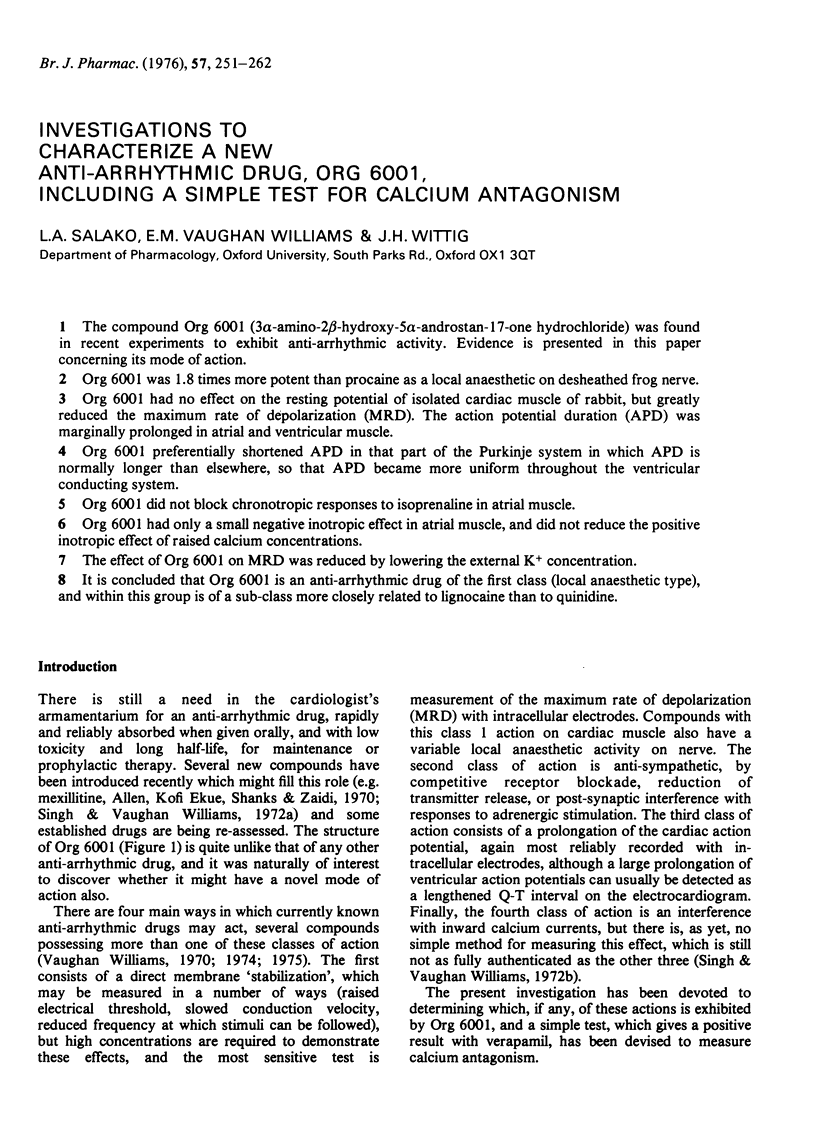
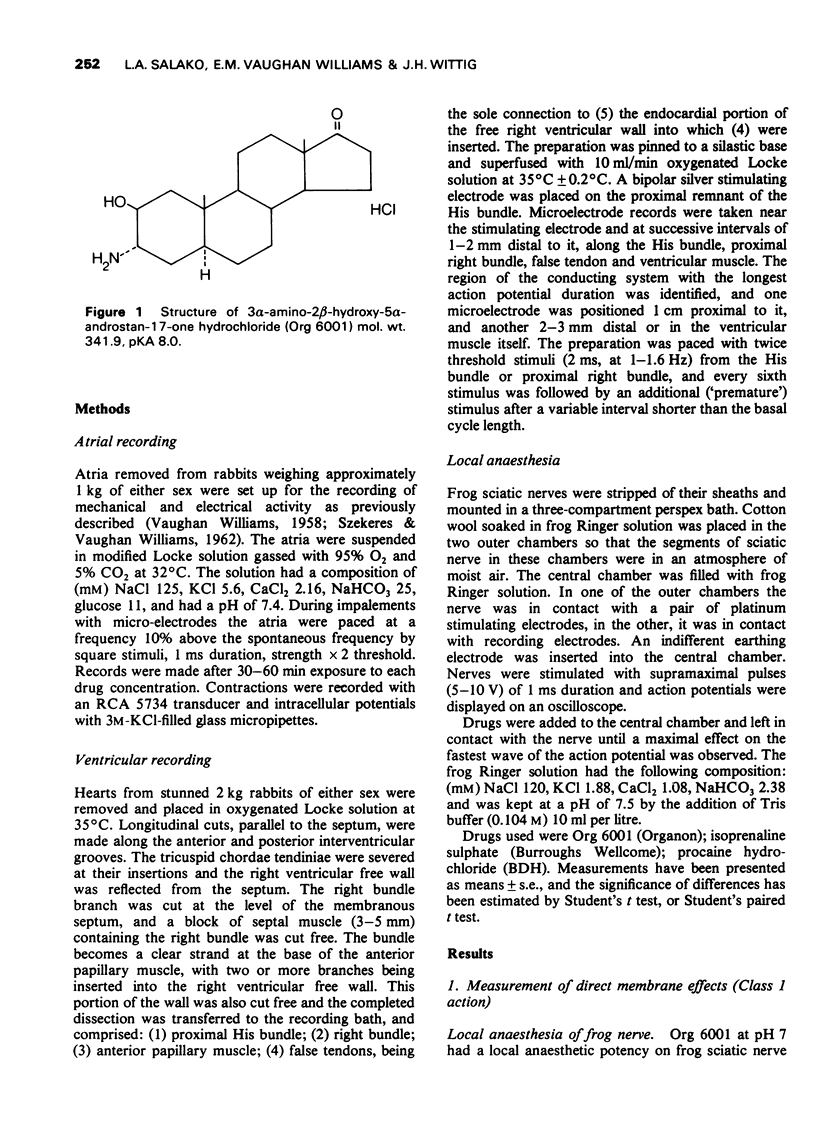
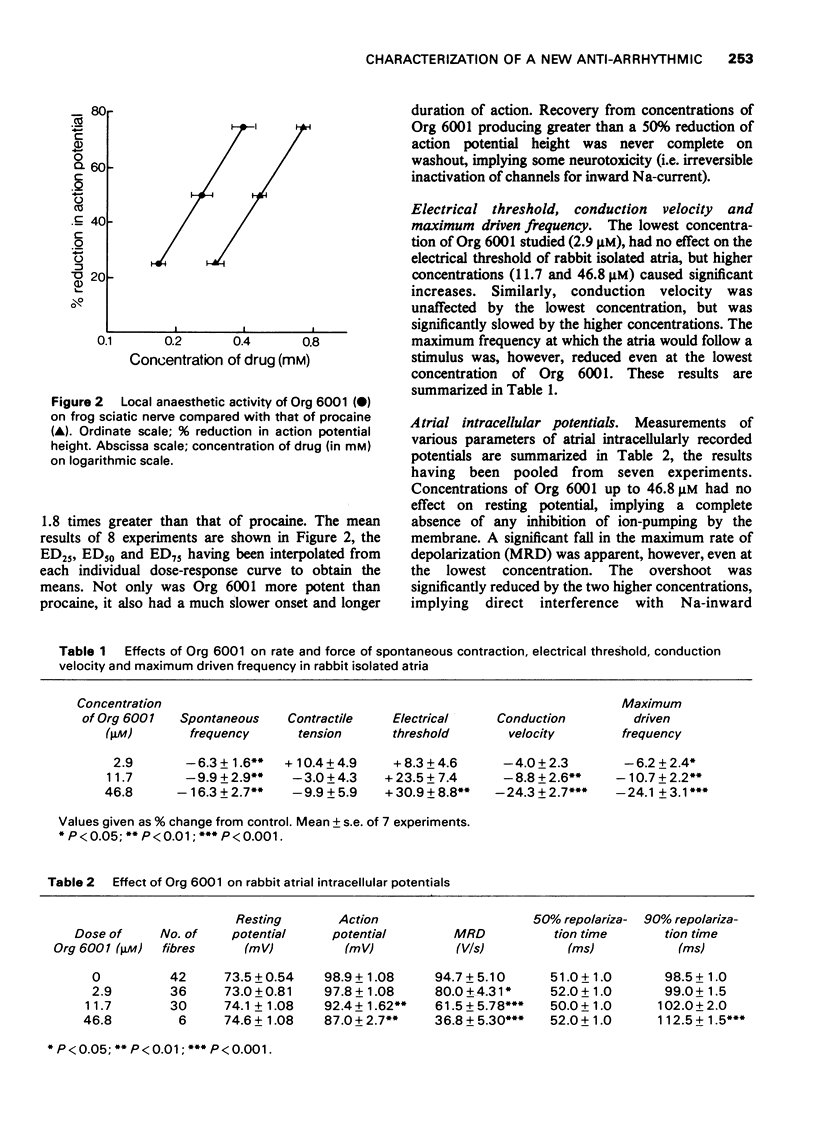
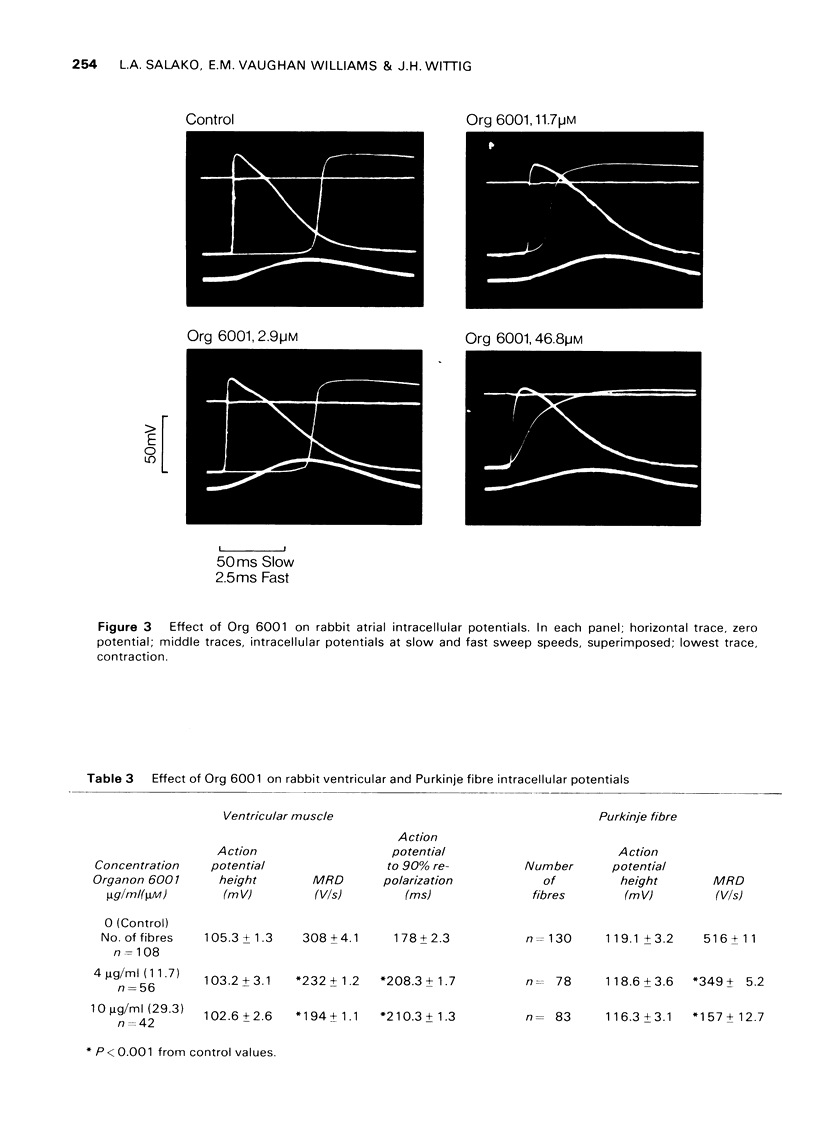
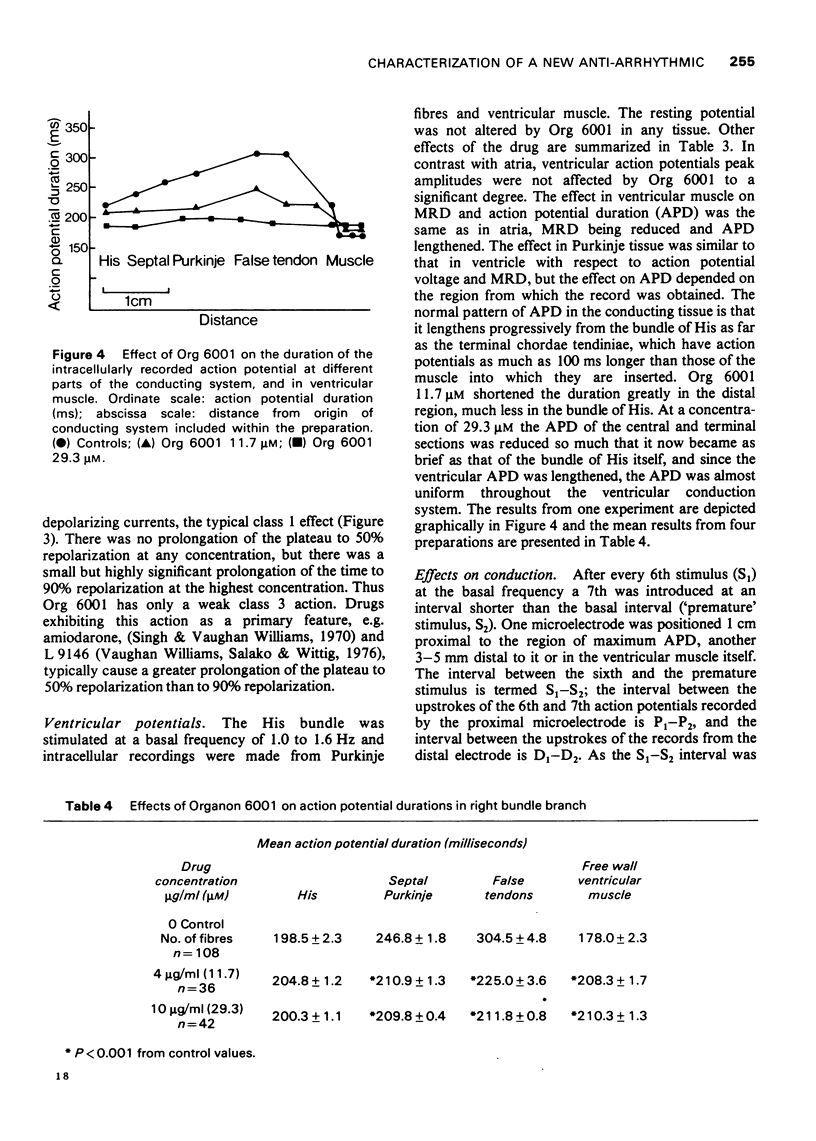
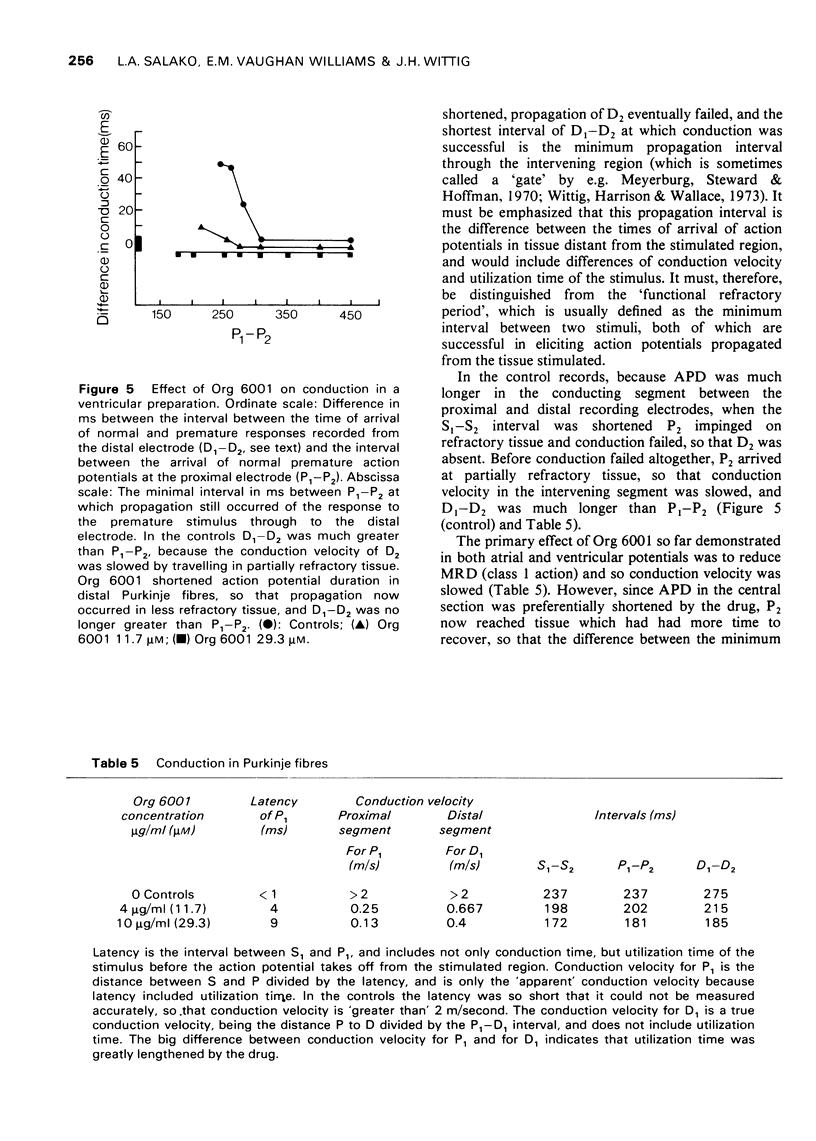
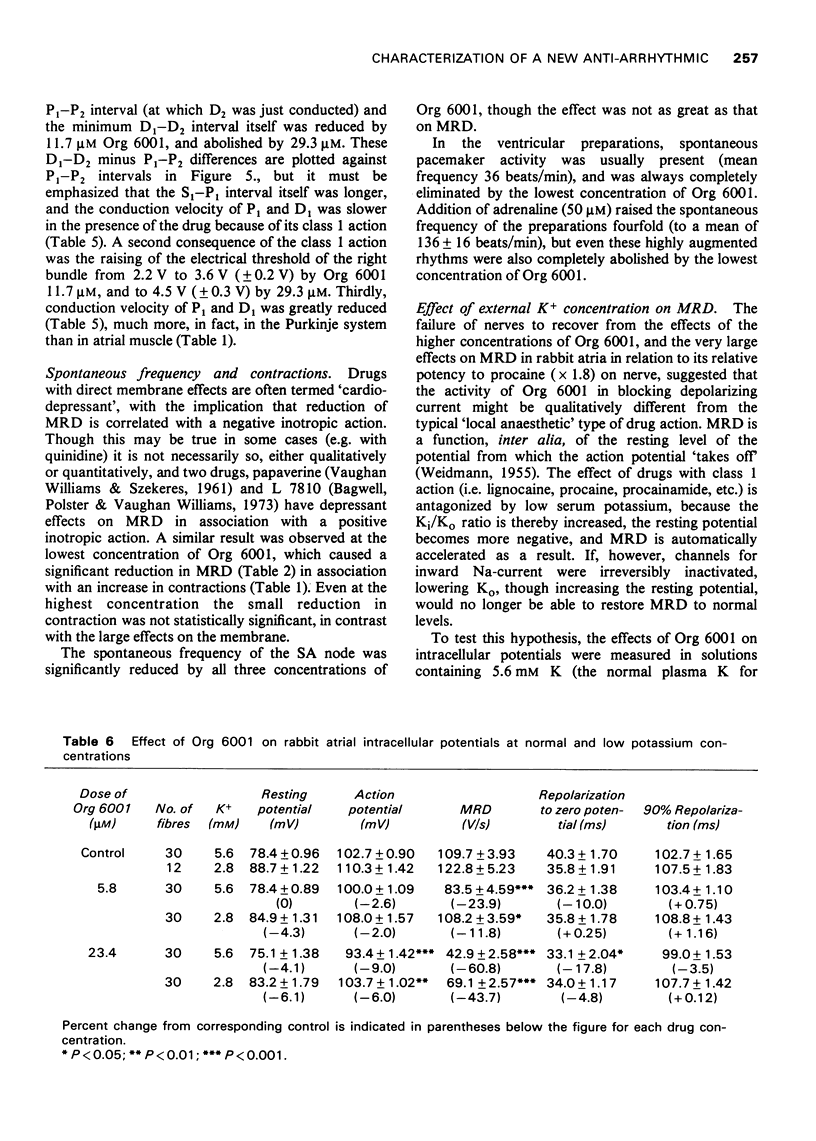
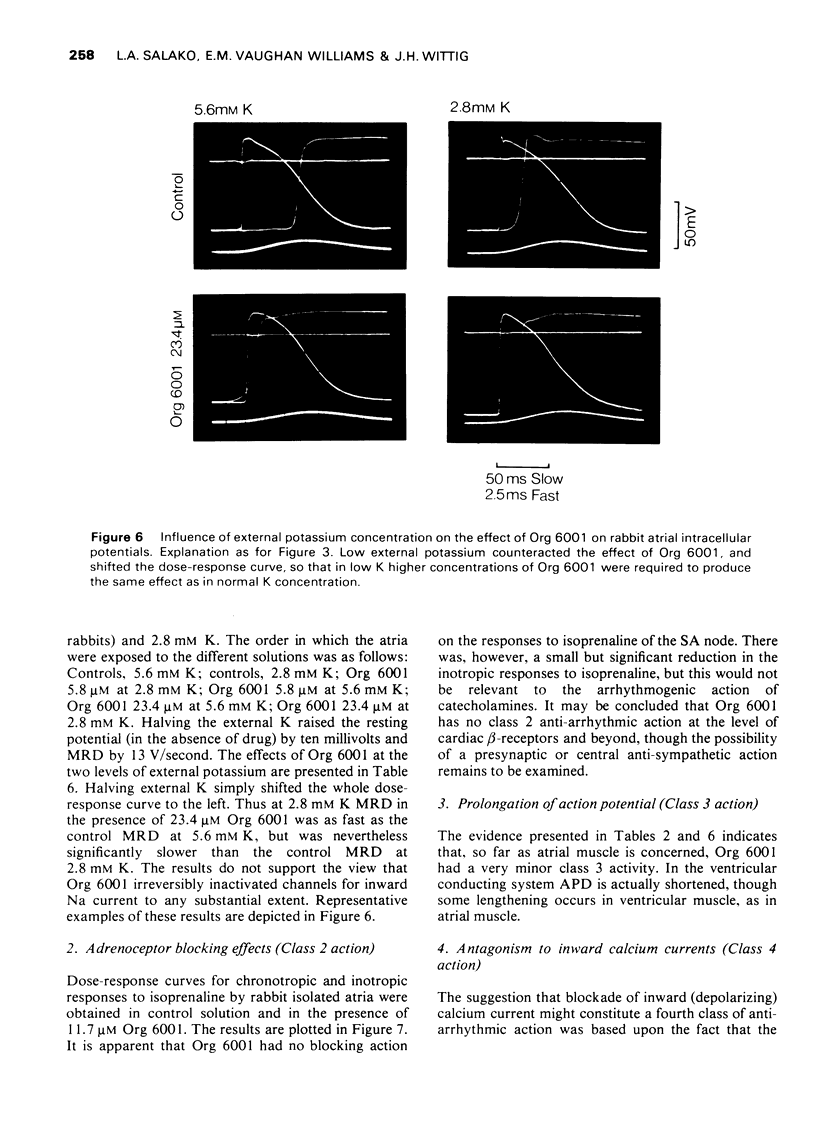
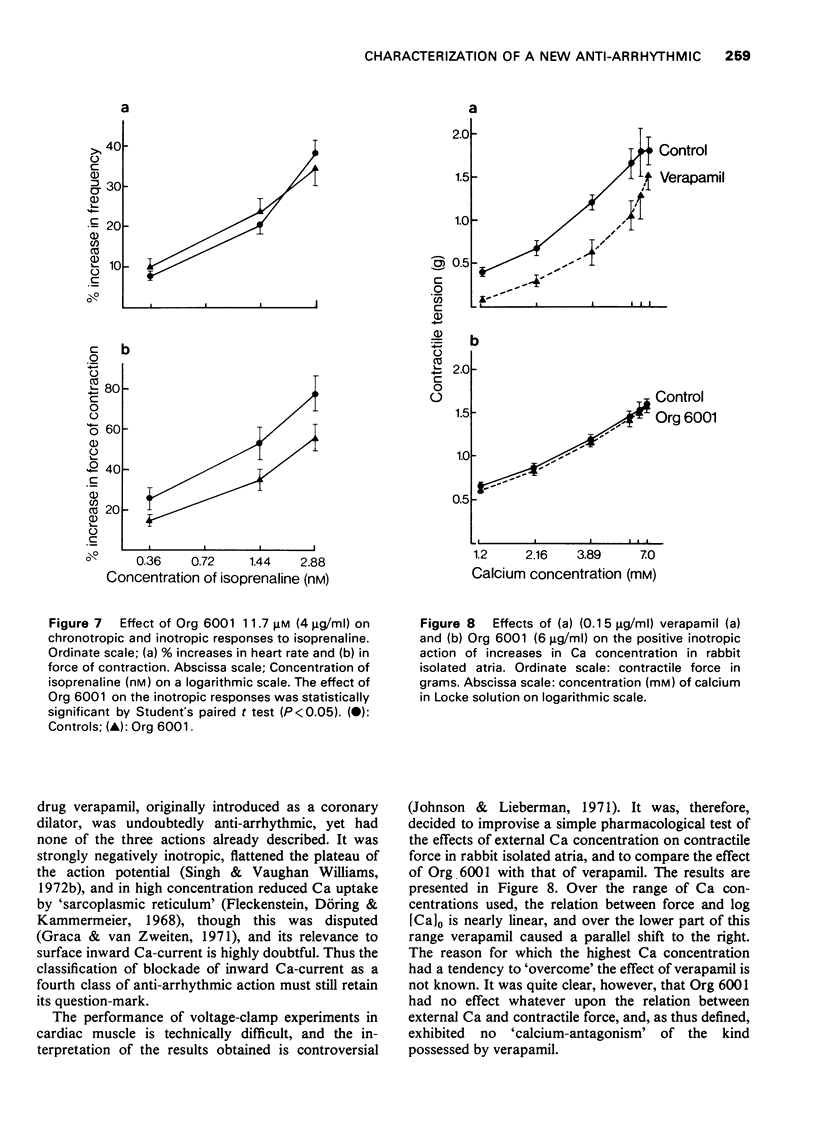
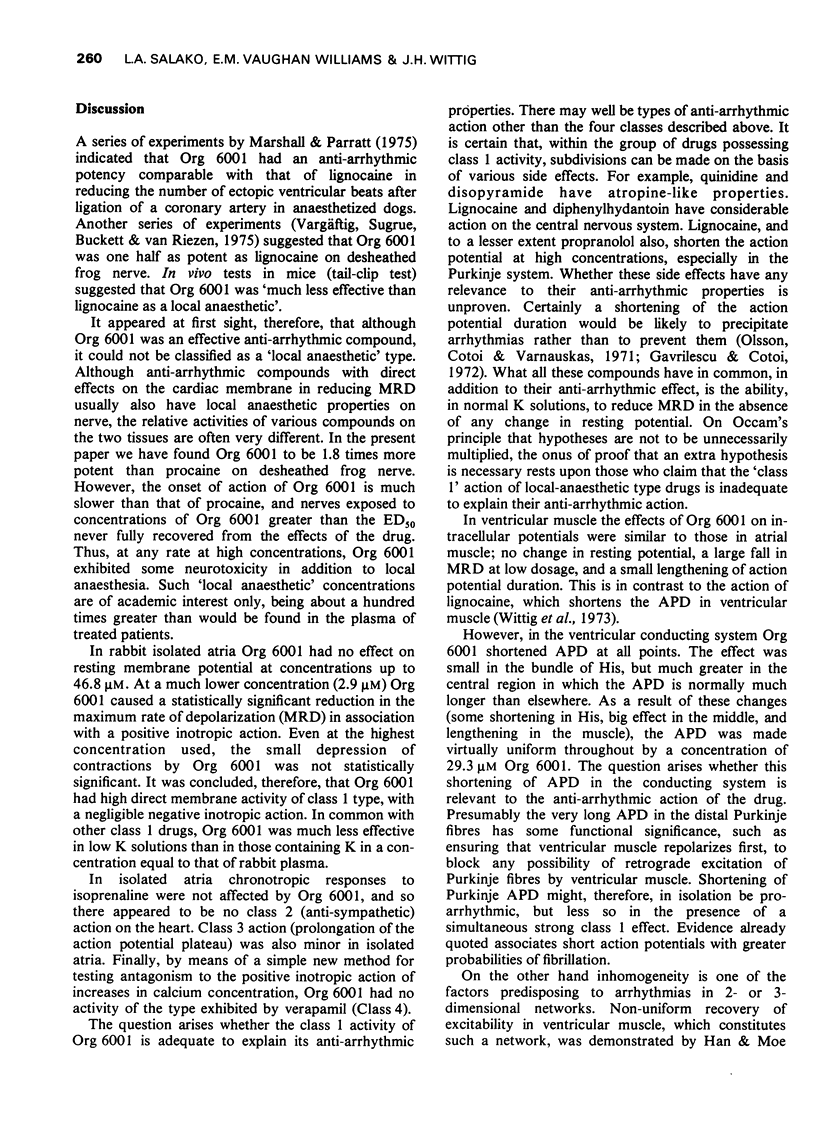
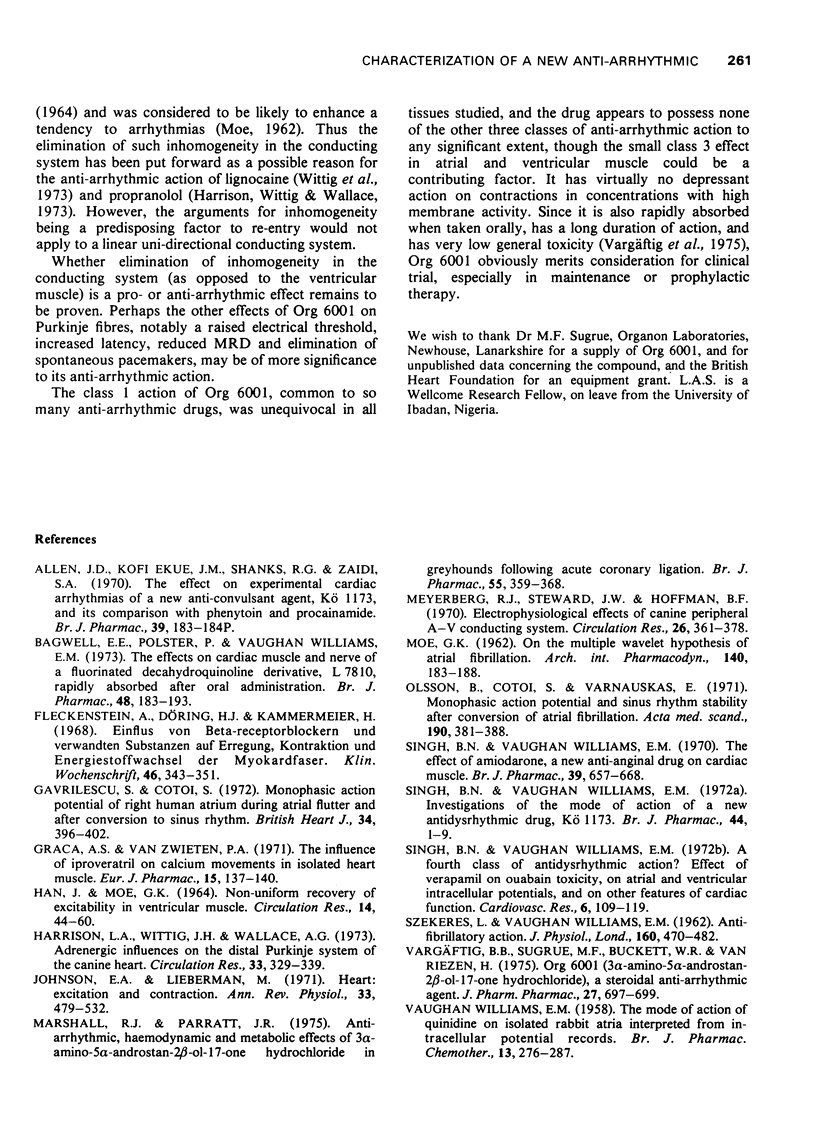
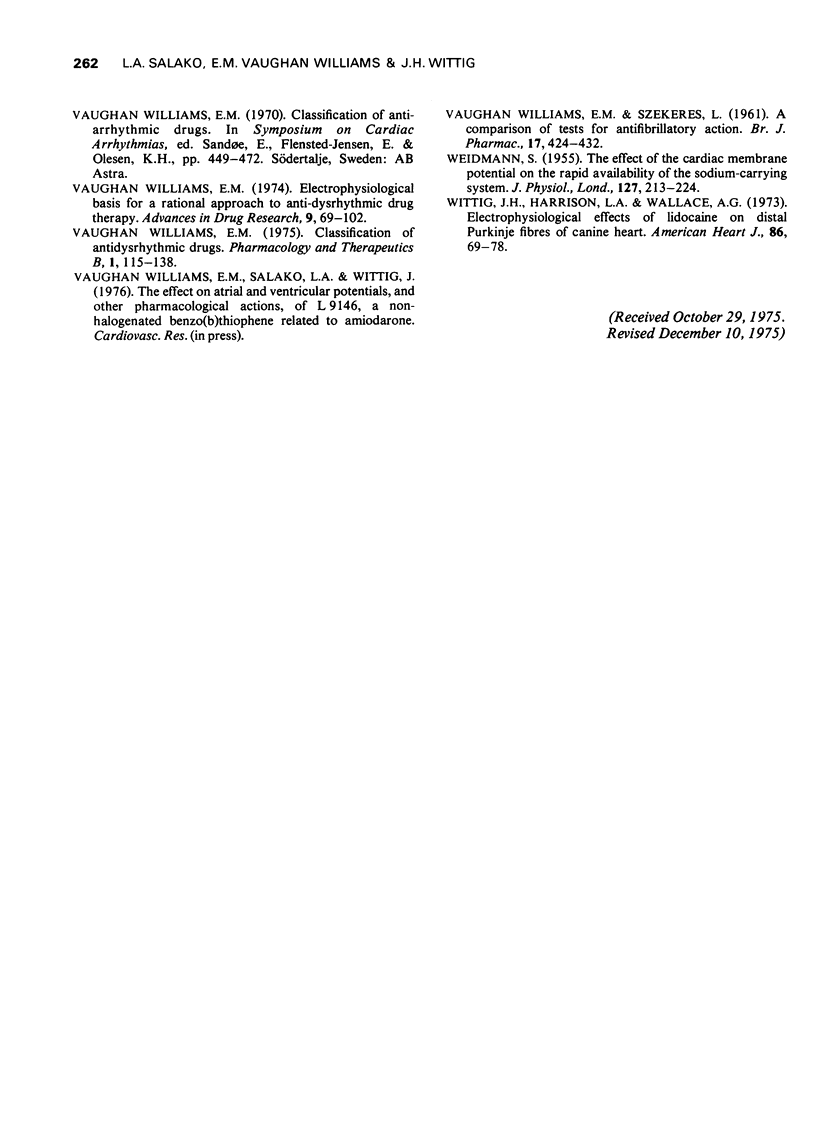
Selected References
These references are in PubMed. This may not be the complete list of references from this article.
- Allen J. D., Kofi J. M., Shanks R. G., Zaidi S. A. The effect of experimental cardiac arrhythmias of a new anticonvulsant agent, Kö 1173, and its comparison with phenytoin and procainamide. Br J Pharmacol. 1970 May;39(1):183P–184P. doi: 10.1111/j.1476-5381.1970.tb09568.x. [DOI] [PMC free article] [PubMed] [Google Scholar]
- Bagwell E. E., Polster P., Williams E. M. The effects on cardiac muscle and nerve of a fluorinated decahydroquinoline derivative, L7810, rapidly absorbed after oral administration. Br J Pharmacol. 1973 Jun;48(2):183–193. doi: 10.1111/j.1476-5381.1973.tb06904.x. [DOI] [PMC free article] [PubMed] [Google Scholar]
- Fleckenstein A., Döring H. J., Kammermeier H. Einfluss von Beta-Receptorenblockern und verwandten Substanzen auf Erregung, Kontraktion und Energiestoffwechsel der Myokardfaser. Klin Wochenschr. 1968 Apr 1;46(7):343–351. doi: 10.1007/BF01734125. [DOI] [PubMed] [Google Scholar]
- Gavrilescu S., Cotoi S. Monophasic action potential of right human atrium during atrial flutter and after conversion to sinus rhythm. Argument for re-entry theory. Br Heart J. 1972 Apr;34(4):396–402. doi: 10.1136/hrt.34.4.396. [DOI] [PMC free article] [PubMed] [Google Scholar]
- Graca A. S., van Zwieten P. A. The influence of iproveratril on calcium movements in isolated heart muscle. Eur J Pharmacol. 1971 Jun;15(1):137–140. doi: 10.1016/0014-2999(71)90089-6. [DOI] [PubMed] [Google Scholar]
- HAN J., MOE G. K. NONUNIFORM RECOVERY OF EXCITABILITY IN VENTRICULAR MUSCLE. Circ Res. 1964 Jan;14:44–60. doi: 10.1161/01.res.14.1.44. [DOI] [PubMed] [Google Scholar]
- Harrison L. A., Wittig J., Wallace A. G. Adrenergic influences on the distal Purkinje system of the canine heart. Circ Res. 1973 Mar;32(3):329–339. doi: 10.1161/01.res.32.3.329. [DOI] [PubMed] [Google Scholar]
- Johnson E. A., Lieberman M. Heart: excitation and contraction. Annu Rev Physiol. 1971;33:479–532. doi: 10.1146/annurev.ph.33.030171.002403. [DOI] [PubMed] [Google Scholar]
- Marshall R. J., Parratt J. R. Antiarrhythmic, haemodynamic and metabolic effects of 3alpha-amino-5alpha-androstan-2beta-ol-17-one hydrochloride in greyhounds following acute coronary artery ligation. Br J Pharmacol. 1975 Nov;55(3):359–368. doi: 10.1111/j.1476-5381.1975.tb06939.x. [DOI] [PMC free article] [PubMed] [Google Scholar]
- Myerburg R. J., Stewart J. W., Hoffman B. F. Electrophysiological propertiesf the canine peripheral A-V conducting system. Circ Res. 1970 Mar;26(3):361–378. doi: 10.1161/01.res.26.3.361. [DOI] [PubMed] [Google Scholar]
- Olsson S. B., Cotoi S., Varnauskas E. Monophasic action potential and sinus rhythm stability after conversion of atrial fibrillation. Acta Med Scand. 1971 Nov;190(5):381–387. doi: 10.1111/j.0954-6820.1971.tb07446.x. [DOI] [PubMed] [Google Scholar]
- Singh B. N., Vaughan Williams E. M. The effect of amiodarone, a new anti-anginal drug, on cardiac muscle. Br J Pharmacol. 1970 Aug;39(4):657–667. doi: 10.1111/j.1476-5381.1970.tb09891.x. [DOI] [PMC free article] [PubMed] [Google Scholar]
- Szekeres L., Williams E. M. Antifibrillatory action. J Physiol. 1962 Mar;160(3):470–482. doi: 10.1113/jphysiol.1962.sp006860. [DOI] [PMC free article] [PubMed] [Google Scholar]
- VAUGHAN WILLIAMS E. M. The mode of action of quinidine on isolated rabbit atria interpreted from intracellular potential records. Br J Pharmacol Chemother. 1958 Sep;13(3):276–287. doi: 10.1111/j.1476-5381.1958.tb00903.x. [DOI] [PMC free article] [PubMed] [Google Scholar]
- Vargaftig B. B., Sugrue M. F., Buckett W. R., van Riezen H. ORG 6001 (3alpha-amino-5alpha-androstan-2beta-ol-17-one hydrochloride), a steroidal anti-arrhythmic agent. J Pharm Pharmacol. 1975 Sep;27(9):697–699. doi: 10.1111/j.2042-7158.1975.tb09535.x. [DOI] [PubMed] [Google Scholar]
- Vaughan Williams E. M. Classification of antidysrhythmic drugs. Pharmacol Ther B. 1975;1(1):115–138. doi: 10.1016/0306-039x(75)90019-7. [DOI] [PubMed] [Google Scholar]
- WEIDMANN S. The effect of the cardiac membrane potential on the rapid availability of the sodium-carrying system. J Physiol. 1955 Jan 28;127(1):213–224. doi: 10.1113/jphysiol.1955.sp005250. [DOI] [PMC free article] [PubMed] [Google Scholar]
- WILLIAMS E. M., SZEKERES L. A comparison of tests for antifibrillatory action. Br J Pharmacol Chemother. 1961 Dec;17:424–432. doi: 10.1111/j.1476-5381.1961.tb01129.x. [DOI] [PMC free article] [PubMed] [Google Scholar]
- Wittig J., Harrison L. A., Wallace A. G. Electrophysiological effects of lidocaine on distal Purkinje fibers of canine heart. Am Heart J. 1973 Jul;86(1):69–78. [PubMed] [Google Scholar]


